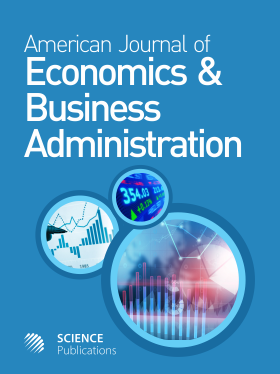Diversification and Performance of Group-Affiliated Firms during Institutional Transitions: The Case of the Chinese Textile Industry
- 1 University of Tsukuba, Japan
Abstract
Problem statement: Business groups play significant roles and evolve with the changing institutional environments in many emerging Asian economies. A study of how the institutional transition and the resultant ‘institutionally rooted evolution’ of business groups affect the diversification outcomes of affiliated firms will therefore help to deepen our understanding of this unique organizational form. Approach: This study uses the 2001-2005 data on listed firms from the Chinese textile industry and estimates the diversification effects of all firms in the sample and the differences in the diversification effects between group-affiliated firms and their stand-alone counterparts. Results: A positive relationship is found between the listed textile firms’ unrelated diversification and their firm value during the period 2001-2005. Furthermore, the results indicate that group affiliation has complicated impacts on the diversification-performance relationship of the listed firms. Although group-affiliated firms are more successful in pursuing unrelated diversification when compared with stand-alone firms, such a difference in performance outcomes is statistically weak (as measured by Tobin’s Q). Furthermore, it is found that group-affiliated firms perform related diversification worse than their stand-alone counterparts (as measured by both ROA and Tobin’s Q). Conclusion: At late stages of the institutional transition, as in China at present, the dominant influence of institutional environments on the diversification-performance link of firms still works and motivates business groups to evolve organizationally. Such an organizational evolution has complex implications for group-affiliated firms’ diversification: the weak performance advantage from unrelated diversification suggests that business groups’ organizational evolution may contribute to the persistence of the comparative strength of business groups’ internal markets; the concurrent low outcomes from related diversification however suggests that the organizational evolution disrupts the interrelations inside the group unavoidably and therefore hurts the fundamental foundation for the realization of related diversification’s value-creation tendency.
DOI: https://doi.org/10.3844/ajebasp.2011.234.246

- 6,067 Views
- 4,135 Downloads
- 2 Citations
Download
Keywords
- Diversification
- business group affiliation
- institutional transitions
- China’s emerging economy
- Related Party Transactions (RPTs)
